The Québec maritime Blog
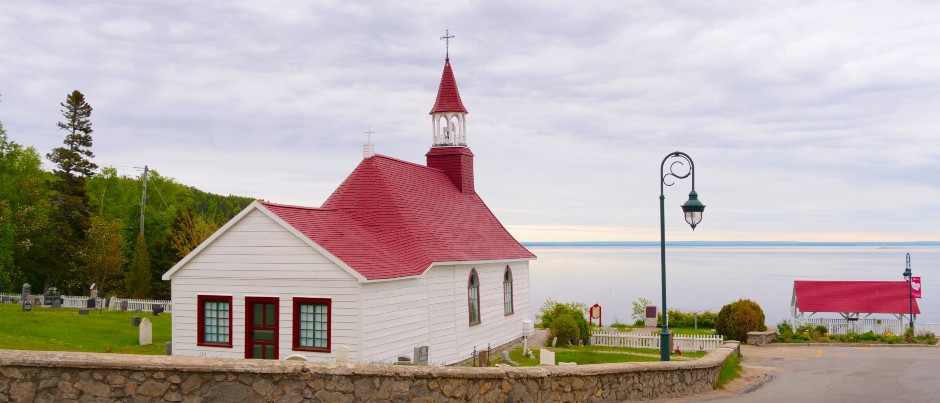
-
Tadoussac Chapel
Thibault Touzeau/Travel Me Happy
Encounter History in Tadoussac
Tadoussac, a charming little village in Côte-Nord nestled in one of the most beautiful bays in the world, is widely recognized as one of the best places to see whales. But there’s much more to Tadoussac than just whale watching! It’s also a historic place that bears witness to our rich past, which is worth discovering in several local interpretation sites. So let’s take a little trip back in time…
8000 years of First Nations presence
To get to Tadoussac, you can take the ferry from the south shore or drive there from the Saguenay region (on Route 172) or from the Charlevoix region (on Route 138). Did you know that the last segment of Route 138 before arriving in Baie-Sainte-Catherine was recently renamed “Route de la Grande Alliance” after the Franco-Aboriginal Alliance of 1603?
This alliance played an important role in the history of New France. In 1603, in what is now Pointe-aux-Alouettes, across from Tadoussac, two French explorers, François Gravé Du Pont and Samuel de Champlain, made an alliance in the name of the king of France with the “grand Sagamo,” Anadabijou, an Innu chief, and his allies. This was the first agreement of its kind between the French and Indigenous peoples.
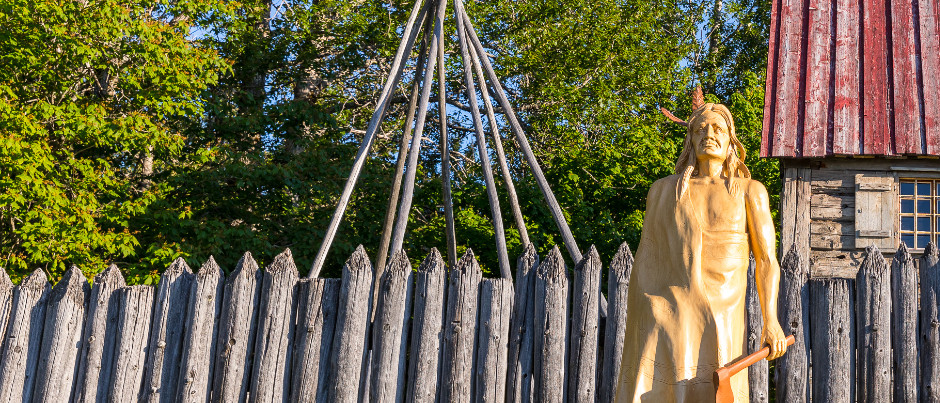 © Mathieu Dupuis
© Mathieu Dupuis
It’s now estimated that First Nations peoples have occupied the Tadoussac area for nearly 8000 years. The Innu people came to this important maritime crossroads to fish as well as meet and trade with other First Nations peoples who fished in the area. The Innu called this place Totouskak.
Tadoussac at the time of New France
In 1600, Pierre de Chauvin chose Tadoussac as the site for the first permanent settlement in New France, which was also the first trading post built in what is now Canada. For over a century, French ships stopped in Tadoussac. After the long crossing, the tall ships filled their holds with furs and fish. And it was here that missionaries also disembarked. Across from the beach, you can still visit the Tadoussac Chapel, the oldest wooden church in North America, which dates back to 1747.
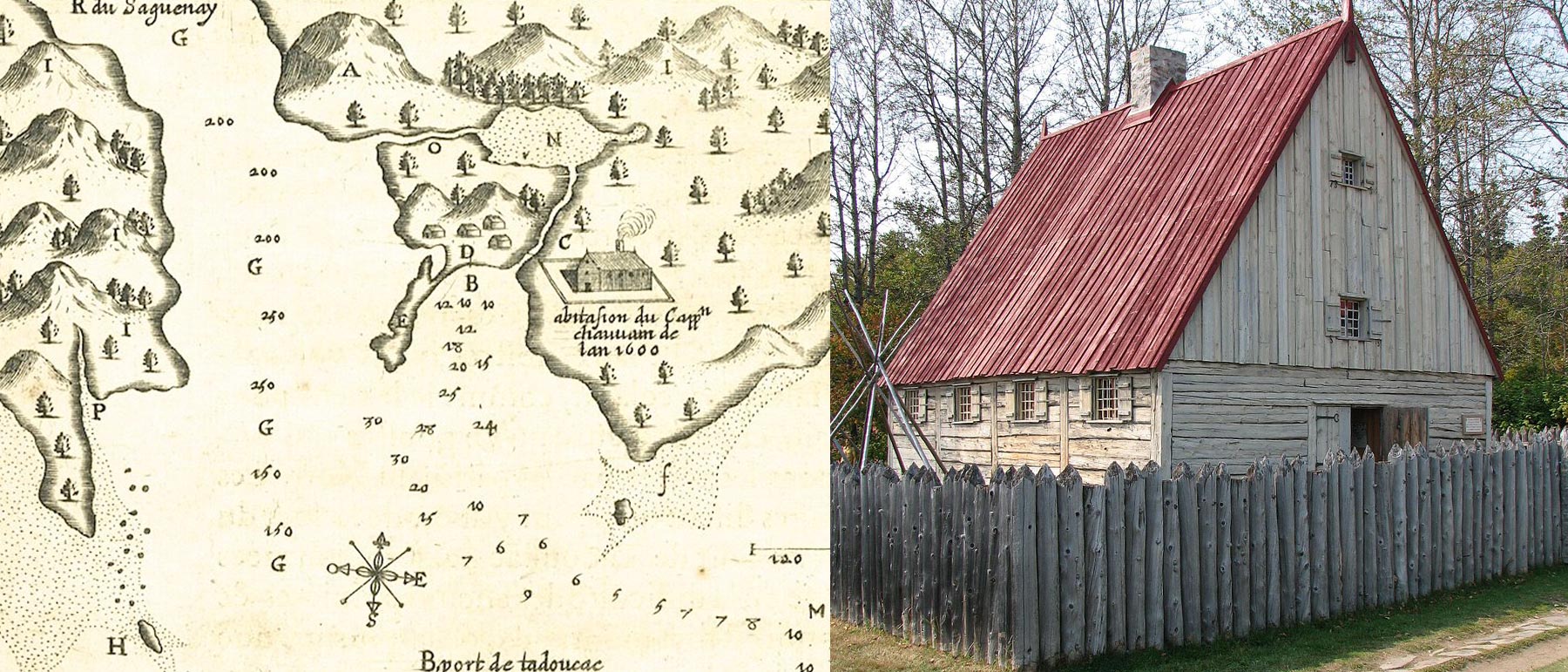
Left: © Library and Archives Canada / Right: © Jean-François Gratton, tour guide
1600 – The Chauvin Trading Post, the first permanent settlement in New France
Before closing permanently, the French trading post passed into the hands of the Hudson’s Bay Company. It was the exclusive trading post of the King’s Domain, a vast territory forbidden to colonization that extended all the way to Labrador. Today, it’s possible to visit a replica of the Chauvin Trading Post, located on its original site, across from the beach. It tells the history of the first encounters between the Europeans and the First Nations people as well as of the fur trade.
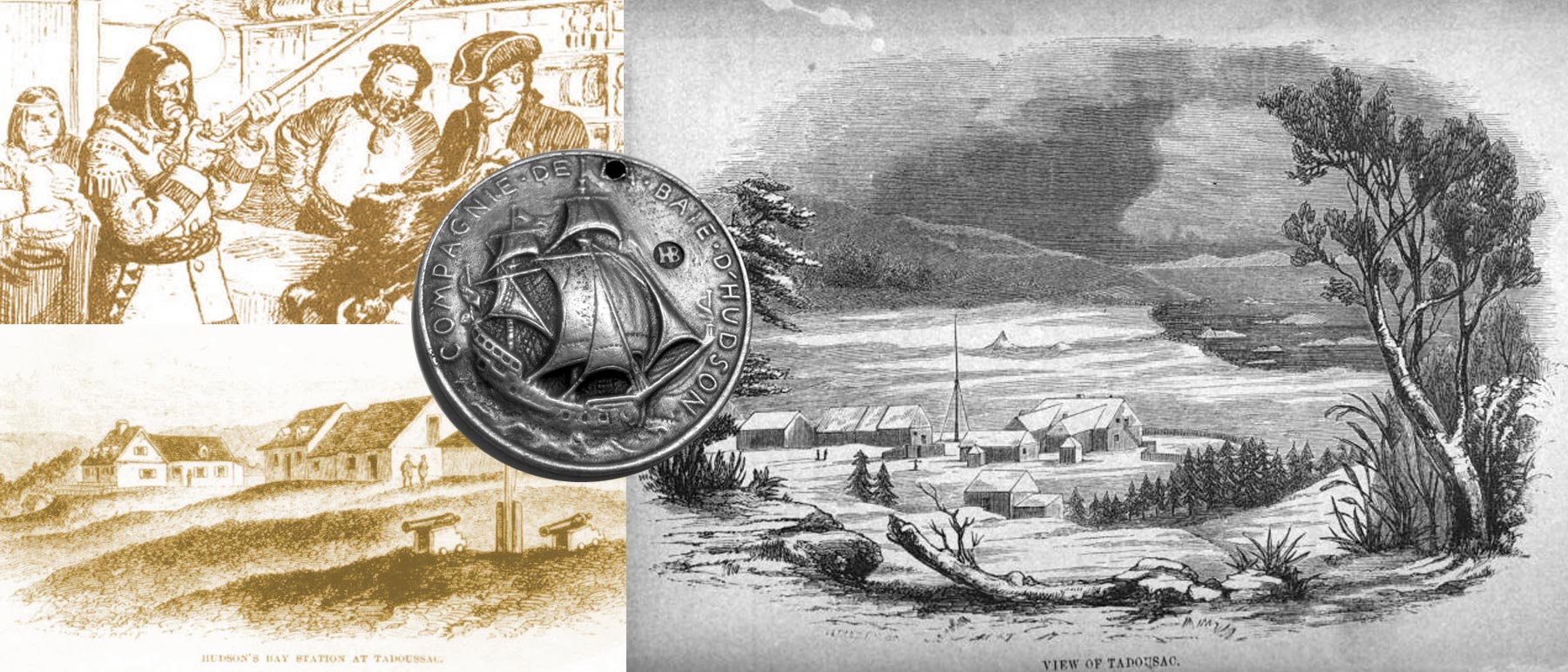
© Hudson Bay’s Company Archives
1851 – The Hudson’s Bay Company closed its Tadoussac post for good after operating it for 20 consecutive years.
Forestry and fishing as economic engines
Today, a ferry will take you across the mouth of the Saguenay Fjord along Route 138 to Anse à l’Eau. It was here that the Price Company, a leader in the forestry industry, built the first steam sawmill in the region in 1838. A plaque marks its location. This sawmill was part of a group of about 20 buildings built by William Price, some of which are still standing. As you climb the hill towards the village, you’ll see one of the most remarkable of these Victorian-style buildings, Hotel Georges, which has a black roof above which rises a square glass tower. The sawmill, which contributed to the growth of the village, was only operational for 10 years.
Very near the ferry wharf is a government fish hatchery, which protects the stocks of Atlantic salmon and landlocked salmon, a freshwater species. William’s son, David Price, an avid salmon fisherman, was responsible for its creation.
The Prince’s visit
Would you believe me if I told you that this same David Price hosted the young Prince of Wales during a fishing trip on the Sainte-Marguerite River near Tadoussac? The year was 1860. In Montréal, the construction of the Victoria Bridge had been completed. The sovereign of the Empire had been invited to attend the opening of the bridge that bears her name, but Her Majesty the Queen declined the invitation and instead sent her eldest son, the future King Edward VII. He inaugurated the bridge and also left a trace of his passage near Tadoussac.
The ship on which the prince was sailing, the HMS Hero, pride of the British navy, ran into a shoal that had never been charted by the Admiralty. As a result, it was named the “Prince Shoal.” Today, the Haut-Fond-Prince Lighthouse (also known as the Prince Shoal Lighthouse) can be seen in the distance and is nicknamed La Toupie (“The Top”) by the locals. It indicates the presence of this hazard about 9 km (6 mi.) off Tadoussac.
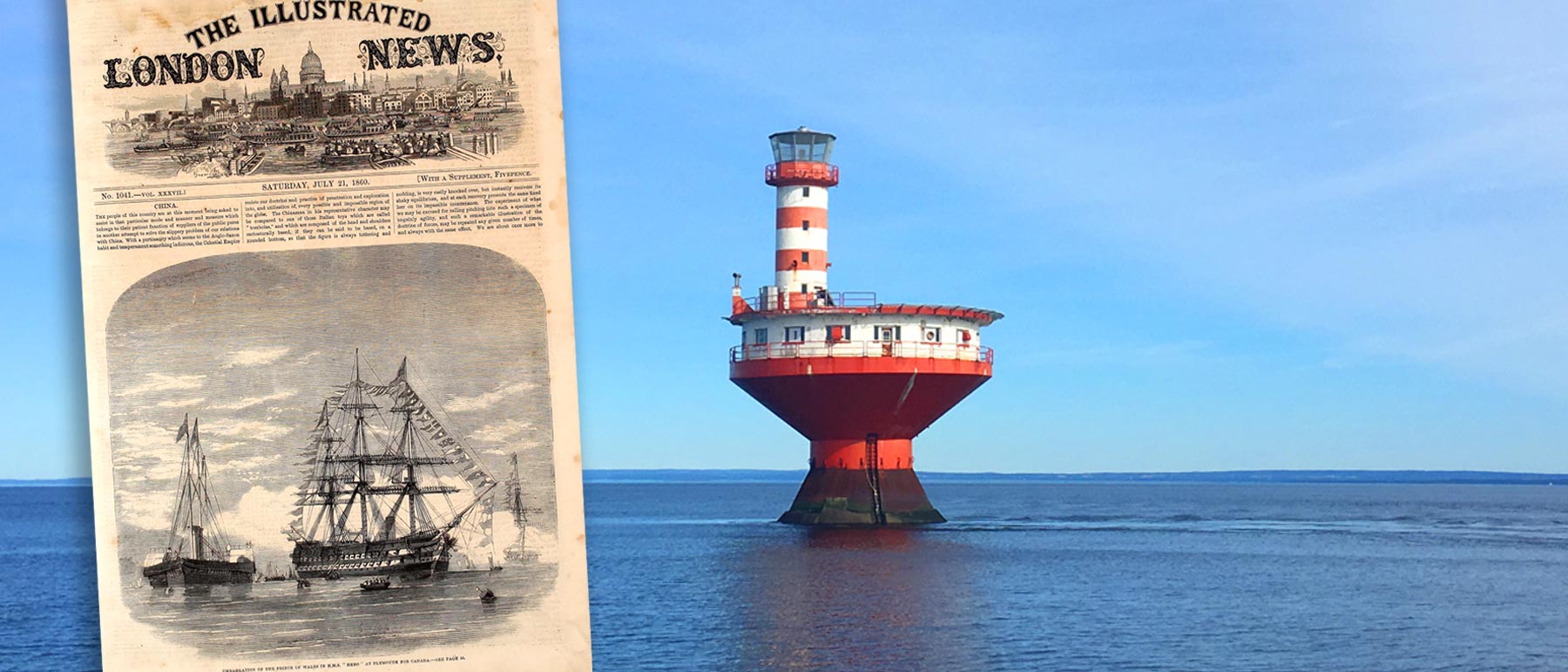
© Lincoln Financial Foundation Collection / © Jean-François Gratton, tour guide
1860 – The Prince of Wales leaves Plymouth for Canada aboard the HMS Hero.
Vacationers landing from sumptuous steamships
Resort tourism began in the Tadoussac area in about the 1850s. Departing from Québec City and Montréal, shipping companies offered cruises in sumptuous steamships to the majestic Saguenay
Fjord. This was the period of the great white ships.
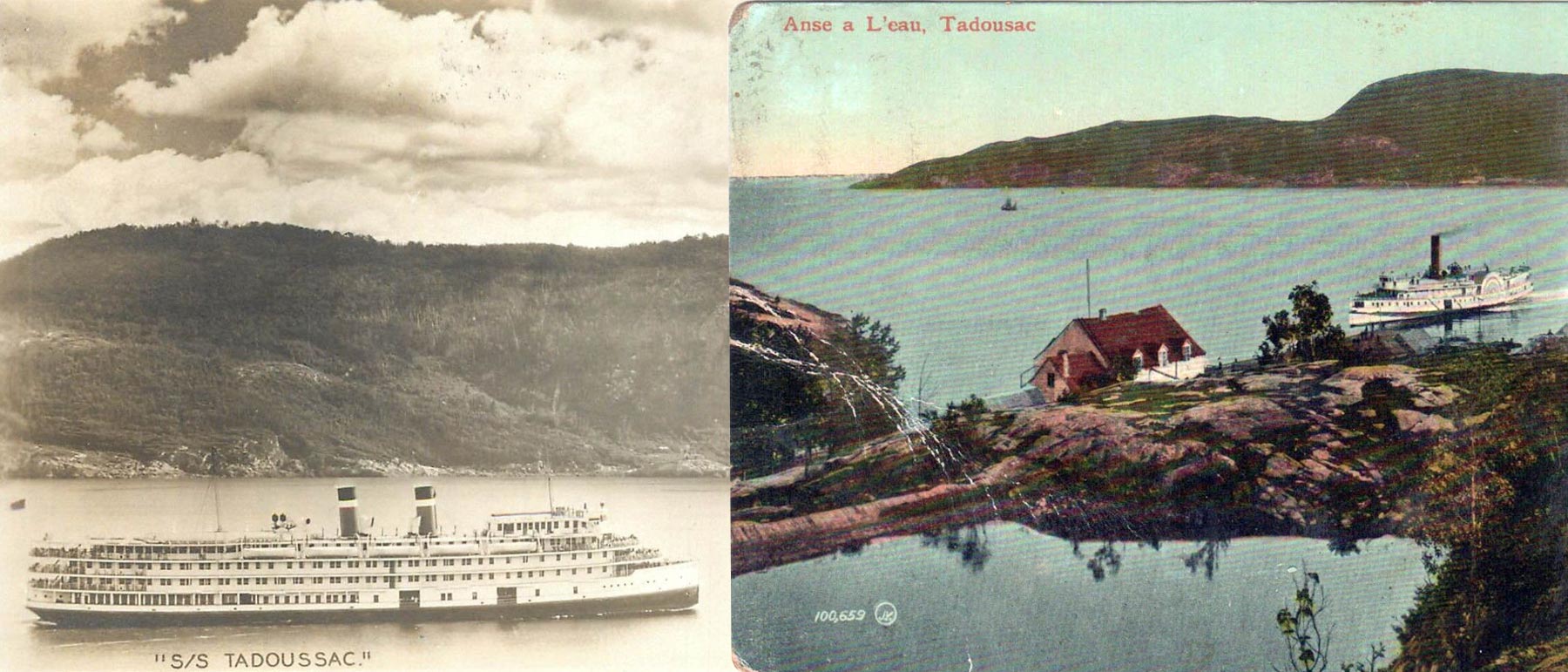
Left: © Canada Steamship Lines Ltd. / Right: © The Valentine & Son Publishing Company Ltd
1966 – The year Canada Steamship Lines ceases offering cruises to the Saguenay.
In 1860, the first summer residence appeared at the top of the cliff on the east side of Tadoussac Bay. Friends of the Price family built beautiful residences with views of the water on Rue des Pionniers, at the same level as the golf course. Many of these families still own property in Tadoussac. In 1864, some of these wealthy owners joined forces to build the first Hôtel Tadoussac. Three years later, the green-roofed Protestant Chapel was built.
Imagine what it what like in the Victorian period, as rich vacationers disembarked from their cruise ships at the Anse à l’Eau wharf. The women wore long dresses and big hats, while the men would have been wearing suits. The hotel would provide them with horse-drawn carriages, so they didn’t have to walk up the hill with their luggage.
The iconic, red-roofed hotel was renovated twice, then demolished and rebuilt in 1942. The president of Canada Steamship Lines, businessman William Hugh Coverdale, was responsible for this major reconstruction as well as for the reconstruction of the Chauvin Trading Post. Part of the Coverdale collection and several period photos can be seen in the lobby and main dining room of Hôtel Tadoussac.
Across from the hotel, behind the Tadoussac Chapel, you’ll see a lone house on the side of the cliff. It was transported by schooner in pre-built pieces and assembled on site in 1873 for a man named Frederick Hamilton-Temple-Blackwood. Does Lord Dufferin ring a bell? If you walked past the Chateau Frontenac in Québec City, you were on the Dufferin Terrace. When you walk along the boardwalk in front of Hôtel Tadoussac, you’ll see the summer residence of Lord Dufferin, who was the Governor General of Canada!
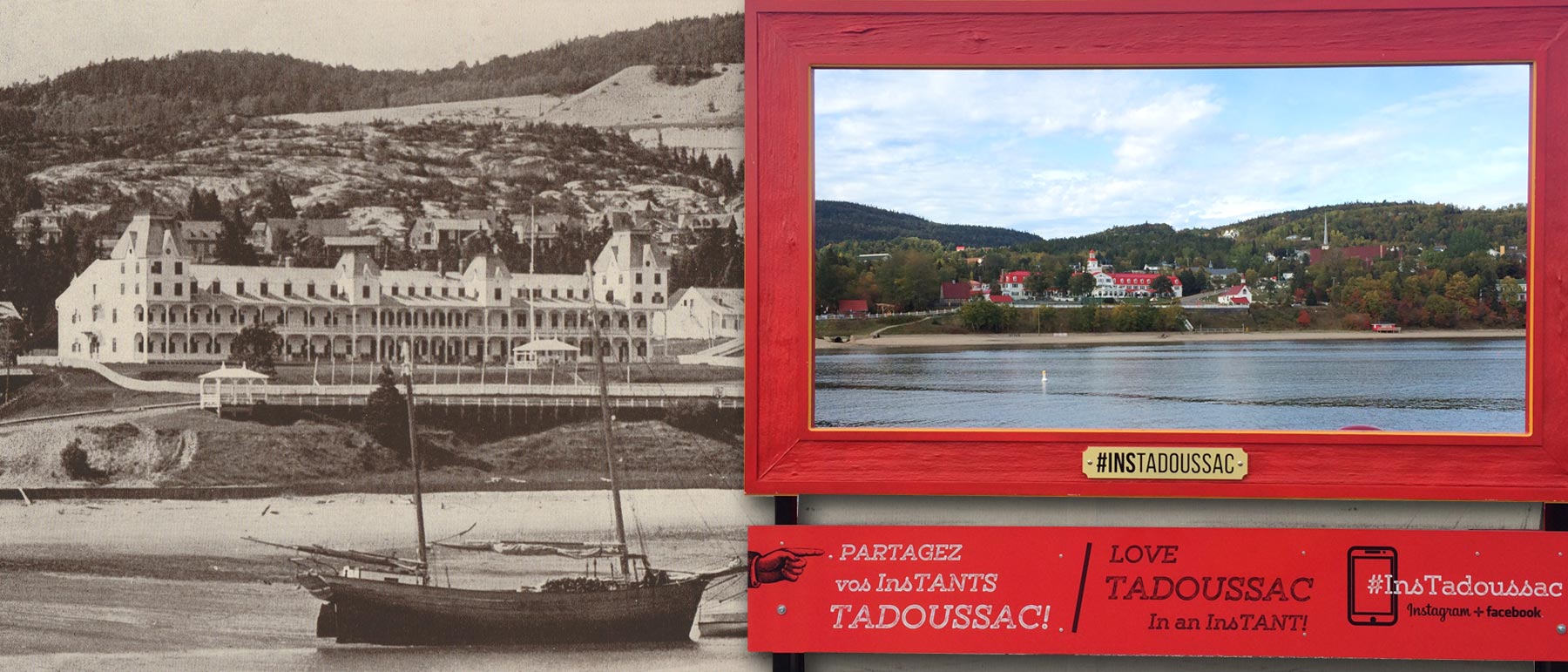
Left: © Canada Steamship Lines Ltd. / Right: © Jean-François Gratton, tour guide
1864 – Construction of the first Hôtel Tadoussac, now an iconic landmark #InsTadoussac
As you walk from the hotel towards the wharf, you’ll spot the Marine Mammal Interpretation Centre (CIMM) on the right-hand side, in the curve of the road. You’ll also see a natural rock formation, which in the past served as a dry dock that was filled naturally with the tides. It was used by Armand Imbeau, a shipbuilder in Tadoussac before the Second World War. One of the ferries that will take you from Baie-Sainte-Catherine to Tadoussac is named after him.
Today, you’ll mostly see whale-watching boats around the village. When you return from one of these excursions, after having seen these majestic giants of the sea, beautiful Tadoussac Bay will welcome you, along with its historic red-roofed hotel, chapel and trading post. Here, over 400 years of history await you and remind us that watching whales in Tadoussac is nothing new…
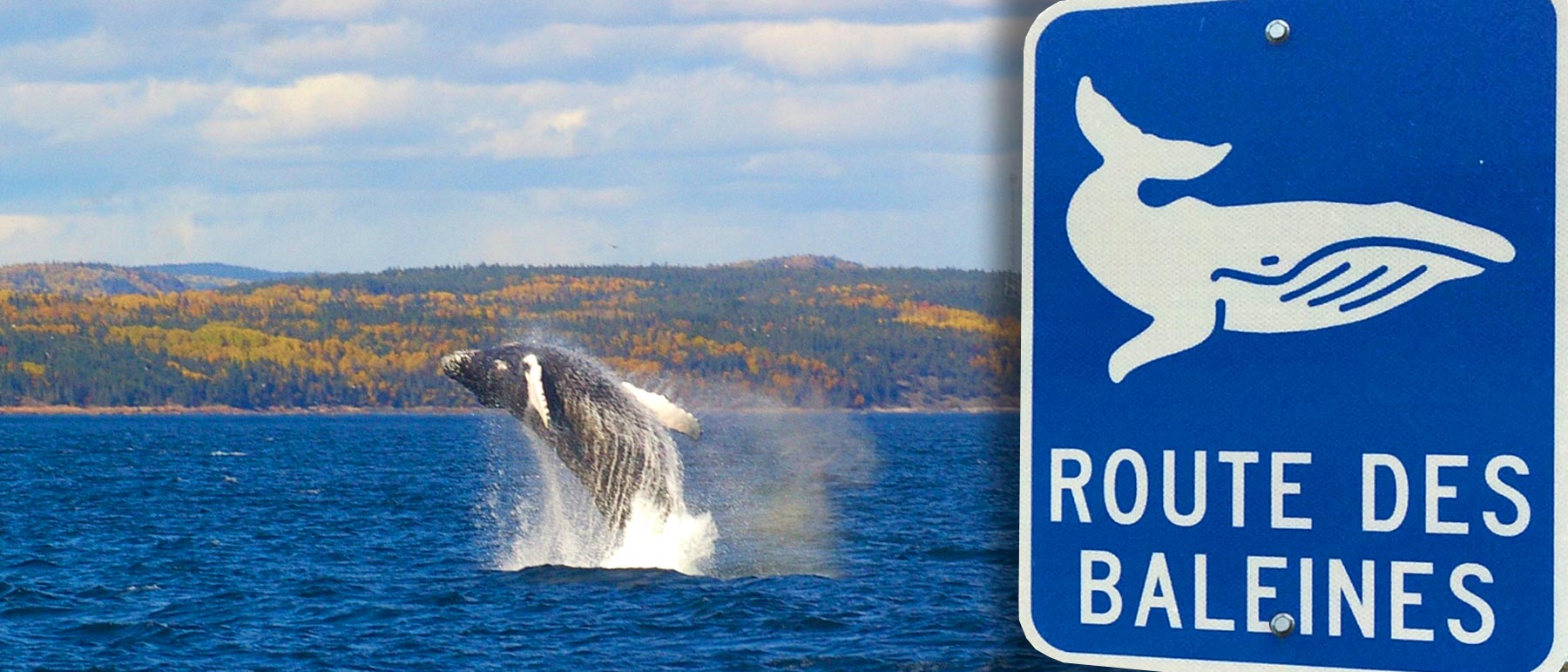 © Jean-François Gratton, tour guide
© Jean-François Gratton, tour guide
As Jacques Cartier himself said: “… it is not remembered that so many whales have ever been seen as we saw that day…”*
Enjoy discovering Tadoussac!
*From A Memoir of Jacques Cartier, Sieur de Limoilou, His Voyages to the St. Lawrence, a Bibliography and a Facsimile of the Manuscript of 1534 by James Phinney Baxter et al., New York: Dodd, Mead & Company, 1906 (https://catalog.hathitrust.org/Record/000288665).
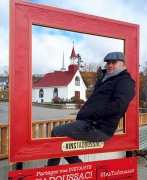
(0) comment